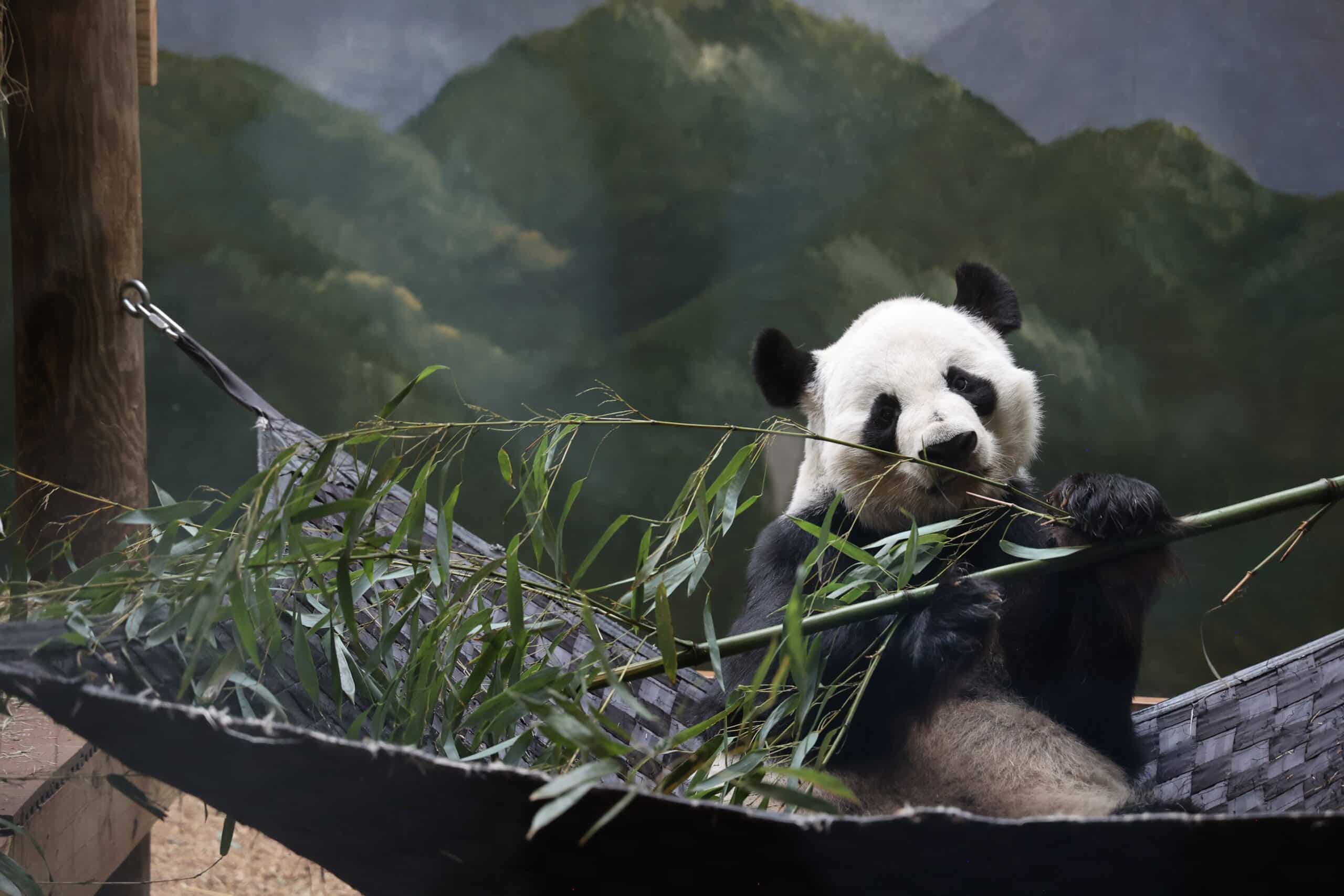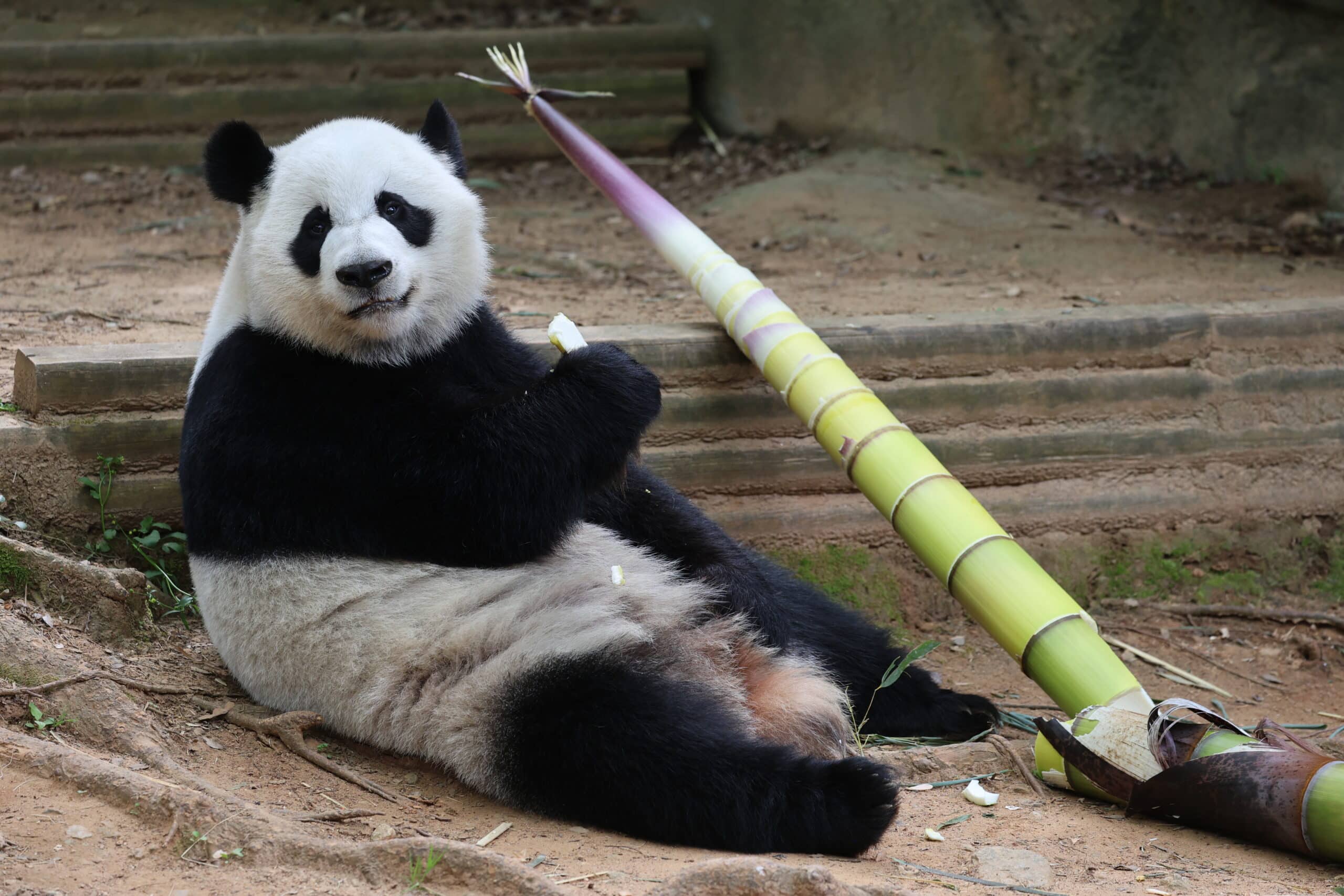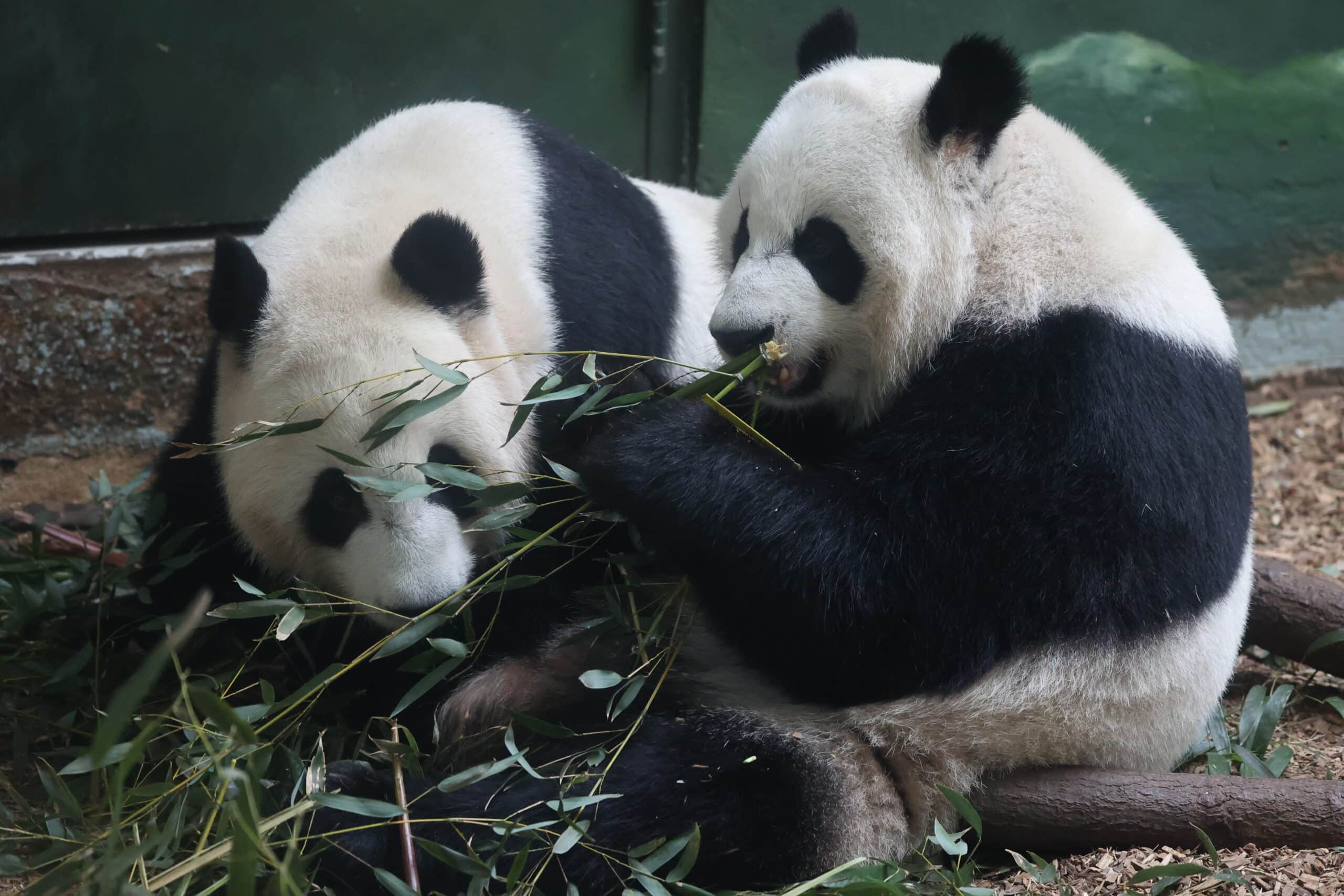Do you want to meet Zoo Atlanta's panda cubs?
Zoo Atlanta opened it’s Panda Extravaganza Sweepstakes today for your chance to win a panda experience of a lifetime. The sweepstakes will randomly select a single winner for an exclusive behind-the-scenes encounter for two in the giant panda nursery, VIP participation for two in the cubs’ 100 Day Naming Celebration, round-trip airfare, two nights at W Downtown-Atlanta, dinner for two at BLT Steak Atlanta, and a spa package for two at Bliss Atlanta! What are you waiting for? Enter now on the Zoo Atlanta website or on Zoo Atlanta’s Facebook page. #ZAPandaWIN.
Entrants must provide a name, email address, mailing address and telephone number to enroll. No purchase is necessary. Participants must be 18 years old or older and citizens or permanent legal residents of the 50 U.S. states. The winner will be contacted and announced by Zoo Atlanta



We can’t get enough of PandaCam! All day, every day, 24/7 panda! But it can be hard to see Lun Lun and her cubs at night. Why does the PandaCam appear dark after dark? Curator of Mammals Rebecca Snyder, PhD, explains:
“The nursery staff turns off most of the lights in the giant panda building at night. They only leave on some very dim lights, so that they can see enough to feed Lun Lun overnight. The camera in the nest box den has infrared capability. So it is possible to have an image without light in the area, but the image is much dimmer than it would be if all the building lights are on. We think it’s good for Lun Lun and the other pandas to have a regular day/night lighting schedule as much as possible. So we try to have as much darkness as possible overnight.”
It’s so great being able to watch the cubs grow right before our eyes. But how is mom doing? Rebecca keeps a close eye on Lun Lun and has been monitoring her post-birth behavior:
“Lun Lun continues to maintain her weight well. She is still a bit above what we consider her ideal weight, which is great since she is feeding two hungry cubs. Her appetite for bamboo has increased in the last two weeks. It’s nice to see her sitting in a pile of bamboo munching away. The cubs are generally quiet now when she is away, so she can relax a little and take her time to eat bamboo. She is mostly eating leaves as are Yang Yang, Xi Lan and Po. Giant pandas eat different parts of the bamboo plant depending on the season and species of bamboo. Our giant pandas tend to eat the stalk or culm more than the leaves. It’s nice when they eat leaves, because it’s easier and less time consuming to clean up the leftover bamboo. This helps now that there are six giant pandas in the building!”
Good for Lun Lun! Nursing two cubs probably makes her very hungry, so we’re glad she’s taking the time to eat more bamboo. Thank you for answering our panda questions, Rebecca. We love learning interesting facts about pandas and, of course, getting updates on Lun Lun and the cubs!
Click here to enter the Panda Extravaganza contest here.
Cub Confidential September 10, 2013:
Both cubs now weigh over 2 kilograms! Cub A weighs 2.213 kilograms and Cub B weighs 2.251 kilograms. This is approximately 4.85 pounds each. Some of the most common cub questions are about the cubs’ weight and size updates. But sometimes we get confused with the cubs’ measurements in metric units. Why are the cubs’ measurements made in metric units? Curator of Mammals, Rebecca Snyder, PhD, shares why they don’t use imperial units:
“We do all of the cubs’ measurements in metric units because giant panda information is shared internationally. Thus, information on the development of the twins can readily be compared to information collected from cubs born in China and other countries. Metric units are also used in scientific publications. There are several metric conversion calculators available on the internet, which can be used by those who prefer measurements in ounces, pounds, etc.”
Jennifer Andrews, Keeper I, wanted to update Cub Confidential readers on how our favorite panda mom is doing:“Over the last several weeks we have watched Lun Lun’s appetite return in full force! We are currently offering Lun Lun around 12 kilograms (26.46 pounds) of bamboo overnight. Just in the last few nights, we have watched her eat with a gusto that we have not seen since before she gave birth to the cubs! Over the next few months, we will continue to gradually increase the amount of bamboo that we offer in order to meet her needs. With previous cubs, we have offered Lun Lun up to approximately 30 kilograms (66.14 pounds) of bamboo overnight. Even though we did not reach this amount until around when her cub was starting to sample bamboo for himself, we expect that Lun Lun’s needs may reach this amount sooner and eventually surpass it since she is caring for two growing boys instead of just one!”
Cub Confidential September 5, 2013:
You hear it first! Our veterinarians perform exams on our cubs every week. Everything is checked, from the length of their legs to the function of their lungs. We have an exclusive video going live at 5:30 p.m. that walks you through a panda cub exam step-by-step. As a Cub Confidential subscriber, you are the first to know about it! Make sure you’re glued into Zoo Atlanta’s YouTube channel to watch the cutest check-up you’ll ever see!
Cub Confidential September 3, 2013:
The nest box looks different. Where’s all the hay? Curator of Mammals Rebecca Snyder, PhD, gives us an update on changes in Lun Lun’s den:
“You may have noticed that we removed the bedding from the nest box. Our colleague from the Chengdu Research Base, Deng Tao, asked us to remove the bedding because he is concerned about the cubs ingesting it accidentally. There is a small risk that ingesting hay could be harmful to the cubs’ gastrointestinal tracts, so we decided to remove the hay. The cubs have a full, thick coat of fur now, and don’t need the bedding for warmth. Lun Lun is also perfectly comfortable resting on the floor without bedding.
Lun Lun has been moving the cubs to different dens over the last few days. These were brief excursions, and she soon returned the cub to the nest box. Lun Lun has done this with her previous cubs, but not until they were older. Giant panda mothers in the wild will move their cubs to different dens periodically. So, I think it’s normal for Lun Lun to move her cubs to different locations. I expect she will continue to move the cubs around in the coming weeks. We monitor her and the cubs closely to make sure they are comfortable and safe wherever they are.”
Thanks, Rebecca! Whether they are lying with mom or in the nest box, we know the cubs are safe and are extremely comfortable in their cuddly fur!
Goodbye, incubator! Jennifer Andrews, Keeper I, wanted to update Cub Confidential subscribers on the next step for our boys:
“When panda cubs are born, they are not able to regulate their own body temperatures, which means that they completely rely on their mom to keep them warm. Since their births, Cub A and Cub B have alternated sleeping in an incubator until it is their turn to spend time with Lun Lun. As they have grown and developed, we have been able to slowly decrease the incubator temperature from 95° F to 78° F. Now that the cubs are able to thermoregulate on their own, it is time to say goodbye to the incubator and introduce them to a new nursery space.
Last night we set up the new “box.” It is a tall, open-top box with a window on one side that allows us to easily monitor the cubs. It looks like a playpen of sorts, but it is designed specifically with panda cubs in mind, meaning that it is cub-proofed so that they can’t climb out or injure themselves. It is also easy to disinfect. This will be the cubs’ new nursery space until they are big enough and mobile enough to both be with Lun Lun at the same time. Until then, we will continue swapping the cubs approximately every four hours so that they each get to spend time with Lun Lun. In the coming weeks, the cubs will use their new space to practice scooting and, eventually, walking. They’ll also spend plenty of time napping, of course!”
Source: Zoo Atlanta

















